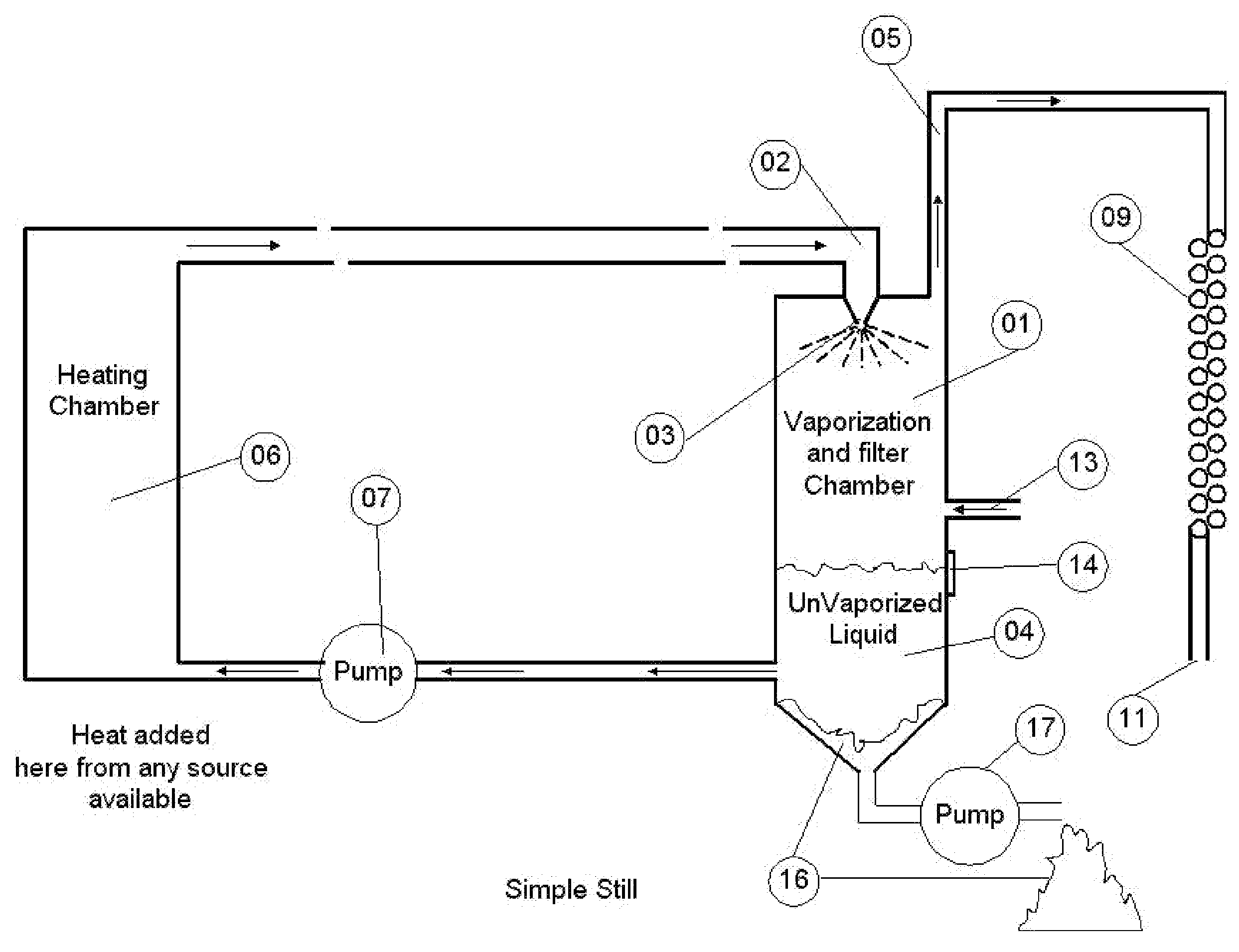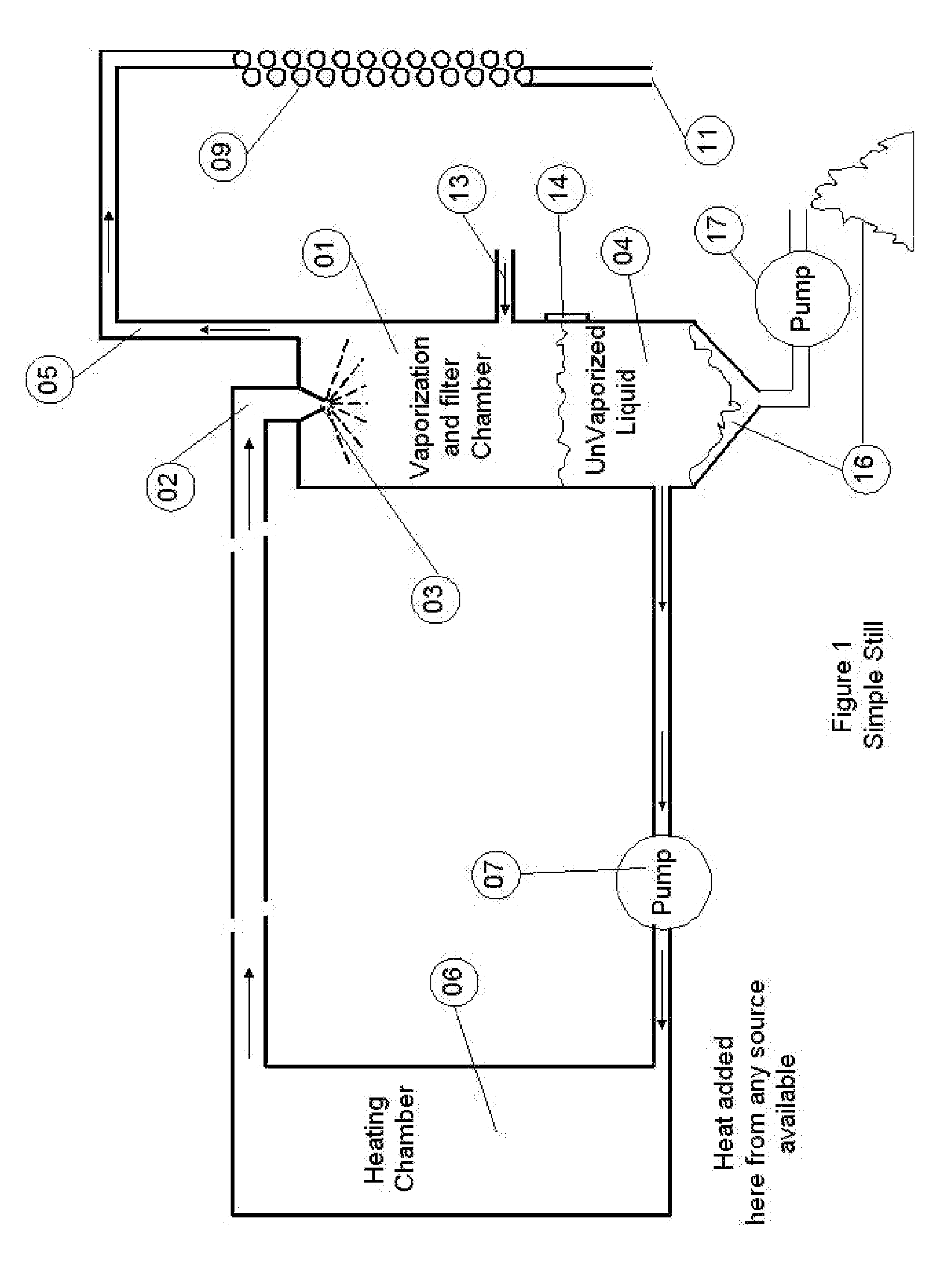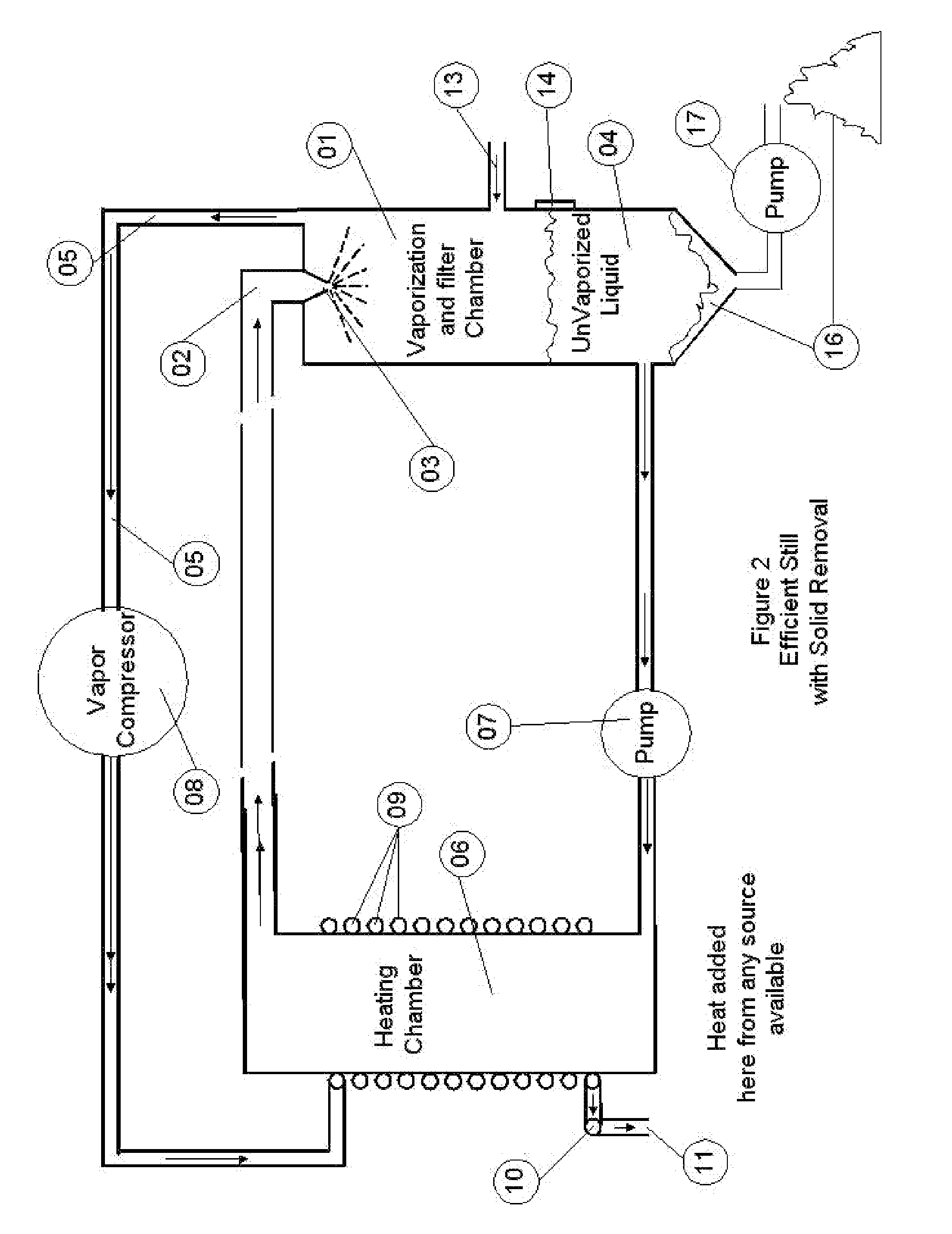Method and Apparatus for Effluent Free Sea Water Desalination
- Summary
- Abstract
- Description
- Claims
- Application Information
AI Technical Summary
Benefits of technology
Problems solved by technology
Method used
Image
Examples
example
[0048]At 212 Deg F. the Vapor Pressure of water is 15 Psi Absolute
[0049]At 230 Deg F. the Vapor Pressure of water is 20 Psi Absolute
[0050]If we operate the Still as follows the scaling is reduced according to this example:[0051]Heat water to 230 degrees in the heating chamber where the Vapor pressure is then 20 psi[0052]Pressurize the water to 30 psi[0053]This yields a Vp of (30 / 20)=1.5[0054]With a flow rate thru the still of 100 times the distilled water output we can achieve a Sf of 8[0055]This yields a S=1 / (((1.5×1.3×8)+1)**2=0.0035 or 0.36% of the usual scaling. This represents a reduction of almost 275 times. Another way of looking at this is that the scale will form 275 times slower on the heating tubes, than in a standard boiler configuration. This means that if you were having to de-scale your boiler once each month, now you can de-scale your boiler once each 275 months or about 23 years.
PUM
 Login to View More
Login to View More Abstract
Description
Claims
Application Information
 Login to View More
Login to View More - R&D
- Intellectual Property
- Life Sciences
- Materials
- Tech Scout
- Unparalleled Data Quality
- Higher Quality Content
- 60% Fewer Hallucinations
Browse by: Latest US Patents, China's latest patents, Technical Efficacy Thesaurus, Application Domain, Technology Topic, Popular Technical Reports.
© 2025 PatSnap. All rights reserved.Legal|Privacy policy|Modern Slavery Act Transparency Statement|Sitemap|About US| Contact US: help@patsnap.com



